#Regent of the Netherlands
Explore tagged Tumblr posts
Text
Margaret of Austria's Table at the Court of Savoy, Mechelen
Laid Table by Nicholaes Gillis, 1611 (Photo credit: https://www.wga.hu/frames-e.html?/html/g/gillis/laidtabl.html) When Maximilian I, Holy Roman Emperor, designated his daughter Margaret of Austria as his procurator of the Netherlands, she bought a complex of buildings in Mechelen located across the street from the home of his grandchildren, the son and daughters of Margaret’s brother, Philip…
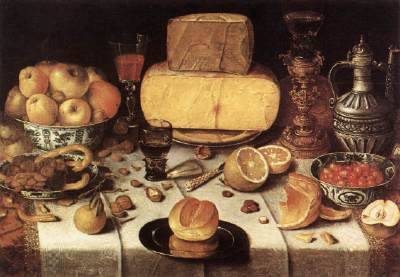
View On WordPress
#Anne Boleyn#Burgundian history#Charles V#Court of Savoy#Duchess of Savoy#Habsburg#Holy Roman Emperor#Low Countries#Margaret of Austria#Maximilian I#Mechelen#medieval history#Netherlands#Regent of the Netherlands#Women’s history
1 note
·
View note
Text
Werewolf Fact #73 - Hypertrichosis, excessive hair growth ("werewolf syndrome"), Beauty and the Beast, and Bluebeard
Today I'll be covering something else clinical: hypertrichosis.

You may have heard of "werewolf syndrome," a condition of excessive hair growth. It isn't to be confused with clinical lycanthropy, which is something else entirely. "Werewolf syndrome" is also called hypertrichosis - and it's occasionally associated with and/or can even be derived from another condition, porphyria, that was also associated with "werewolves" throughout scholarship. Likewise, the most well-known kind of hypertrichosis that involves excessive hair growth all over the body is also often associated with gum and teeth problems; such issues could lead to unusual teeth and mouth shape.
Interestingly, however, despite a lot of modern scholars retroactively assuming that werewolf victims of the past could have suffered hypertrichosis, many of the werewolf legends in question specifically describe lycanthropy sufferers to look quite different. The legends in question are later era ones from the Early Modern period, during which time lycanthropy had become a madness and a disease under clinical and scientific supervision, very much unlike previous time periods, as I cover extensively in my book The Werewolf: Past and Future as well as other werewolf facts.
These legends describe sufferers of the werewolf curse variably to only be "hairy" when in their wolf form specifically (other than, occasionally, having long hair without mention of unusual body hair), highlighting how they were not unusually hairy in human form, or to "always [have] some hairs in the hollow of his hand" (as noted by Sabine Baring-Gould in The Book of Were-Wolves; taken from page 121 of my own edition of his work). Hypertrichosis often specifically does not have hair growth on the palms, conversely. Likewise, many legends of later time periods even specifically say that werewolves are not hairy "on the outside," but that their hair "grows inward" when they aren't in their inhuman form.
Still, scholars entertain the notion of connections that I still question to a healthy degree, so I have studied it as a result. I think it's best to simply summarize it as, the syndrome reminds people of what werewolves are meant to look like, rather than asserting that "this is why some people believed in werewolves" and the like.
Hypertrichosis is rare, and any kind of proper documentation only began perhaps around the 1600s. During this time and for a very long time after, sufferers of hypertrichosis were often called a variety of terms like "ape-men" or "wolf-men." They were considered spectacles and often were brought to noble courts like exotic animals, to entertain high society. Many were circus freaks. Not all examples are before our time, either.
But, Mav, you ask, how is this related to Beauty and the Beast and Bluebeard? Aren't those fairytales?
One famous example of someone with hypertrichosis is the one whose related image began this post: Petrus Gonsalvus, who lived from around 1537 to sometime past 1617. He was called assorted names, such as "the wild gentleman of Tenerife," "the man of the woods," and of course, "the Canarian werewolf." He lived in assorted courts throughout both Italy and France, including the court of Henry II, King of France, around 1547 - he was sent there when he was but 10 years old as a gift from a regent (Margaret of Parma) of the Netherlands. He moved about various courts over time and even married.
Much of Gonsalvus's family inherited his condition (four of his seven children), including some of his daughters. Like their father, they were often traded amongst courts as pets of a sort. Here is Madelene Gonsalvus, a portrait from 1580:

It is believed that the marriage of Petrus Gonsalvus to his wife, a woman believed to be named Catherine and a lady-in-waiting to Catherine de Medici, may have provided some inspiration for the tale of Beauty and the Beast, which was first written in 1740 by Gabrielle-Suzanne Barbot de Villeneuve.
Beauty and the Beast may not be the only fairytale inspired by hypertrichosis, either. The tale of Bluebeard, as also discussed by Baring-Gould in his Book of Werewolves, describes Bluebeard as "His hair and moustache were light brown, and his beard was clipped to a point. This beard, which resembled no other beard" (232), similar to some elements of hypertrichosis variations, as well as mention of his gum condition: "At intervals he ground his teeth like a wild beast preparing to dash upon his prey, and then his lips became so contracted, as they were drawn in and glued, as it were, to his teeth, that their very colour was indiscernible" (233).
Sidebar: if you're interested in the story of Bluebeard and what it was based on, definitely check out Sabine Baring-Gould's The Book of Were-Wolves, as he has an unmatched documentation of it. I don't think it really has a place in a book about werewolves, but obviously I preserved his work in its original condition, so you can find it in my edition of his book, as well. It's not for the faint of heart, but it's morbidly very interesting.
So, connection to werewolves or not, it's still certain that hypertrichosis was seen as an inhuman condition. There are many examples of people who had or have the condition and records of how they were treated throughout history.
As mentioned, I have to wonder how much of this was actually associated with werewolf legends - given legends always explicitly involved transformation, which was the entire basis of it - but scholars eat this kind of thing up. In academia, everyone is always trying to come up with "new arguments" to "add to the conversation" or whatever, so we end up discussing and studying hypertrichosis alongside werewolf legends that specifically state such things weren't a part of the legends. Weird, isn't it?
Anyway, hope you enjoyed the post. Until next time!
And stay tuned for news and updates on a major [werewolf] book release later this year!
If you like my blog, be sure to follow me here and elsewhere for more folklore and fiction, including books, especially on werewolves! You can also sign up for my free newsletter for monthly werewolf/vampire/folklore facts, a free story, and book previews.
Free Newsletter - maverickwerewolf.com (personal site + book shop + free fiction) — Patreon — Wulfgard — Werewolf Fact Masterlist — X — Vampire Fact Masterlist — Amazon Author page
#werewolf#werewolves#werewolf fact#werewolf facts#werewolf wednesday#werewolfwednesday#folklore#folklore facts#mythology#history#wolf#wolves#lycanthrope#lycanthropes#lycanthropy#shapeshifting#shapeshifters#resources#hypertrichosis#beauty and the beast#fairytales#fairy tale
25 notes
·
View notes
Text

Portrait of the Infanta Isabella
Artist: Peter Paul Rubens (Flemish, 1577–1640)
Title: Portrait of Isabella Clara Eugenia regent of the Netherlands
Genre: Portrait
Date: circa 1615
Medium: Oil on Canvas
Collection: National Gallery, Westminster, England
Isabella Clara Eugenia (Spanish: Isabel Clara Eugenia; 12 August 1566 – 1 December 1633), sometimes referred to as Clara Isabella Eugenia, was sovereign of the Spanish Netherlands, which comprised the Low Countries and the north of modern France with her husband, Archduke Albert VII of Austria.
Their reign is considered the Golden Age of the Spanish Netherlands, which saw a revival of its economy and arts after a peace was concluded with the break-away Dutch Republic. Isabella was one of the most powerful women in 16th- and 17th-century Europe.
#portrait#17th century painting#infanta isabella#oil on canvas painting#isabella clara eugenia#spanish netherlands#17th century europe#peter paul rubens#flemish painter#spanish#spanish nobility
19 notes
·
View notes
Text
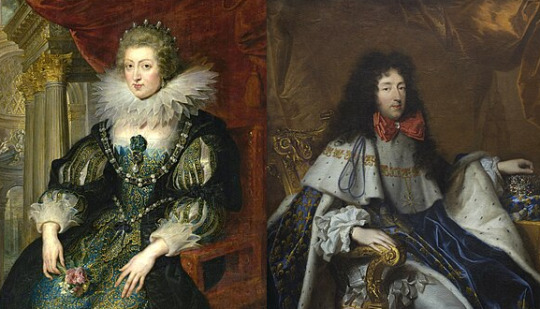
Anne:
Was a spanish habsburg born in Valadolid and, as such, princess of the Netherlands. Cause why not. She did the regency for her son Louis XIV until he became of age.
Philippe:
Gay but like not in a comical way. However also like openly gay, which is uncommon for the time but also YOU go tell the king that his brother is a disgrace and should be more discreet.
He isn't a regent or anything but he is a Bourbon, brother of the king, def gay, and founder of the house of Orléans, who are big phony usurpers and deserves to be in this bracket as such.
22 notes
·
View notes
Text
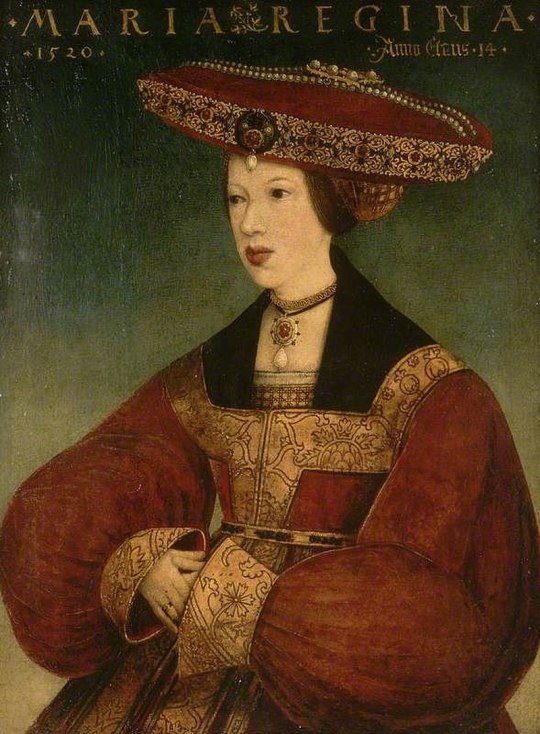

Mary of Hungary, Queen of Hungary 1516-1526, Governor of the Netherlands 1531-1555
Called mannish for "her authoritarian manner, her overly public life and her 'masculine' activities".
Carlos II, King of Spain, reigned 1665-1700
Caused a succession crisis, but not intentionally.
from anon:
"-patron of the arts! had some very good court painters - claudio coello, luca giordano, and juan carreño de miranda -appointed capable ministers like medinaceli and oropesa -loved his first wife marie-louise d'orléans very much -was a silly funny little guy who liked to play harmless pranks on his courtiers -listen we know the whole succession crisis was a clusterfuck but it was NOT carlos's fault!!! he tried his best to navigate through it and the first candidate he picked (joseph ferdinand of bavaria) was actually a good choice but he died in 1699 so carlos had to fucking go all the way back to square ONE and he knew he couldnt please everyone with his choice -had a very funny episode of teenage rebellion when he allied with his bastard brother don juan of austria against his own mother the queen regent"
from @master-of-the-opera-house:
Intersex icon 💛💜
No heirs but spawned countless memes inaccurate or not we all have him to thank <3
Mentally eel girlies rep
Historians still get him wrong: scapegoat for everything going into shit when it really was just the snowballed problems of monarchy and generations of inbreeding he did not have agency in like literally everyone was inbred anyway
He was NOT totally incapable of ruling and NOT a puppet king
Extremely poor little meow meow-core
Emo goth girlies rep
Nice hair at least for a while
21 notes
·
View notes
Text
I'm begging you, please motivate me.
Bow Before the Lord of Spring – Jan's marooning on Kiku's beaches from the shipwreck of the dutch ship de Liefde that changed the destiny of two nations through his first return to the Netherlands. Featuring scurvy, a love born of mutual kindness, yuzu, a feral cat of a nation, the jade stalk going through the back jade gate and linguistic romance.
An Axe of Danegeld – The Viking time travel fic where Alfred knocks himself back too the 9th century. Featuring Matt being mistaken for Vinland and making good on his those rusty axe skills, the bastardization of medieval magic, Magnus on beserker mushrooms, Viking-age child Arthur, and Alfred trying to do wormhole math on trees and meeting his namesake.
The Song of Eirian – The life and death of Britannia with the invasion of the Jutes, Angles and Saxons in the 5th century featuring a portrait of life in the so-called 'Dark Ages,' Brighid's reign as regent, Alasdair attempting to engineer a different fate, Rhys doing his duty and baby Arthur's inability to ever remember his cloak and what it means to love and what it means to die as a nation.
Mother of Exiles – Brighid's odyssey from penal-era Australia to the fever sheds of 1840s Toronto and a final bit of peace in Boston, Massachusetts. Featuring typhus, coffin ships, the Irish diaspora shaping the sons of the British and how the true courage of a nation is in its compassion.
At the End of the Blade – Matt wakes up in a morgue with more holes in him than a block of swiss featuring Arthur committing crimes against humanity Alfred tries to solve a murder and what justice means when the victim cannot die.
63 notes
·
View notes
Text






Royal Deaths in History - 17th September
1322 - Robert III of Flanders.
1422 - Constantine II of Bulgaria.
1632 - Susenyos I, Emperor of Ethiopia.
1665 - Felipe IV, King of Spain & Portugal.
1679 - John Joseph of Austrian, Spanish general and illegitimate son of Felipe IV of Spain (Regent of Spain, Governor of South Netherlands).
1767 - Prince Edward of Wales, Duke of York and Albany, son of Frederick, Prince of Wales.
6 notes
·
View notes
Note
hang on. there is actually a station in london called pancreas?? is it on the red line too this is very important information
i'm not a Londoner, nor from the UK, I don't know if it's on the red line. 😭😭 The only thing I know is that it's the terminus for the Eurostar, coming from Paris. @emmalovesfitzloved could help you with this one.
this is what I found on wiki.
"St Pancras railway station (/ˈpæŋkrəs/), officially known since 2007 as London St Pancras International, is a central London railway terminus on Euston Road in the London Borough of Camden. It is the terminus for Eurostar services from Belgium, France and the Netherlands to London. It provides East Midlands Railway services to Leicester, Corby, Derby, Sheffield and Nottingham on the Midland Main Line, Southeastern high-speed trains to Kent via Ebbsfleet International and Ashford International, and Thameslink cross-London service to Bedford, Cambridge, Peterborough, Brighton, Horsham and Gatwick Airport. It stands between the British Library, the Regent's Canal and London King's Cross railway station, with which it shares a London Underground station, King's Cross St Pancras."
7 notes
·
View notes
Text

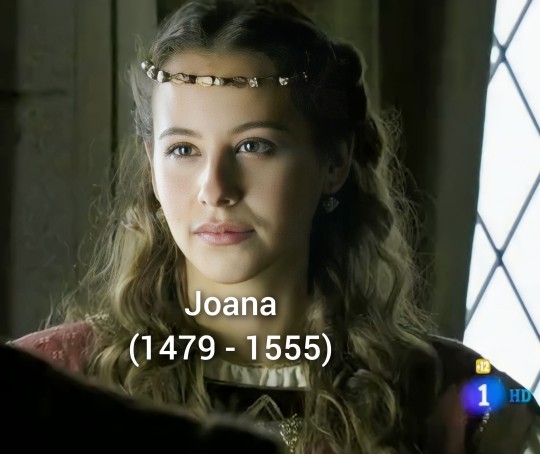


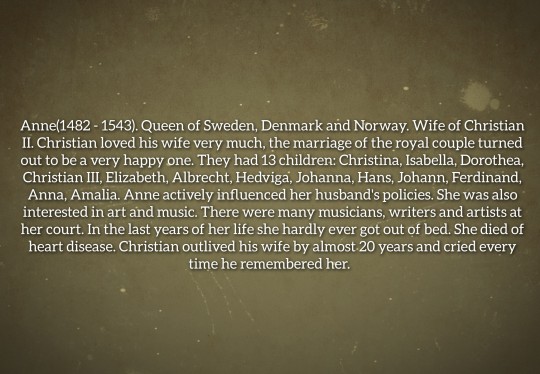
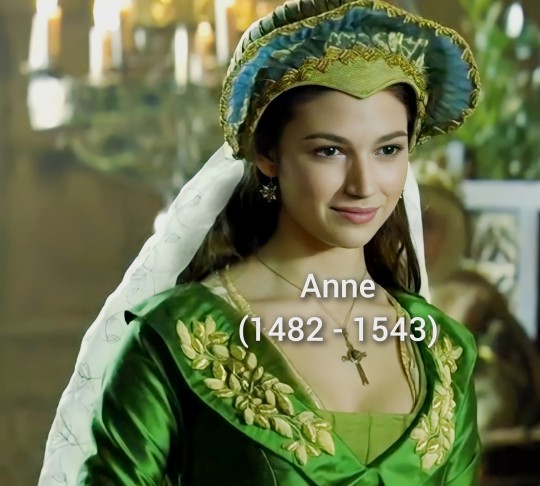




AU House of Trastamara: Children Isabella of Castile and Ferdinand of Aragon.
Joana(1479 - 1555). Duchess of Burgundy. Wife of Philip I of Austria. Mother of 6 children: Eleanor, Charles V, Isabella, Ferdinand, Maria, Catherine. Joana lived a long and interesting life. After the untimely death of her husband, she became regent under her infant son Charles. And after her son became emperor, he made her ruler of the Netherlands. Joana outlived not only her husband, but all of her siblings and even got to see her great-grandchildren. She died surrounded by her children and grandchildren.
Mary(1482 - 1550). Queen of Scots. Wife of James IV. Mary and James IV maintained a warm relationship throughout their marriage. The queen supported her husband in everything, but the king preferred her to his favorite. The marriage produced 7 children: James V, Margaret, Isabella, Matilda, Robert, Anabella and David. After her husband's death, she devoted herself to culture and art.
Anne(1482 - 1543). Queen of Sweden, Denmark and Norway. Wife of Christian II. Christian loved his wife very much, the marriage of the royal couple turned out to be a very happy one. They had 13 children: Christina, Isabella, Dorothea, Christian III, Elizabeth, Albrecht, Hedviga, Johanna, Hans, Johann, Ferdinand, Anne, Amalia. Anne actively influenced her husband's policies. She was also interested in art and music. There were many musicians, writers and artists at her court. In the last years of her life she hardly ever got out of bed. She died of heart disease. Christian outlived his wife by almost 20 years and cried every time he remembered her.
Catherine(1485 - 1543). Queen of England. Wife of Prince Arthur and then his brother Henry VIII. Mother of 6 children: Elizabeth, Henry IX, William, Edmund, Mary, Isabella. The marriage of Henry and Catherine was a happy one. She exerted political influence on her husband. In addition, Catherine paid great attention to the upbringing and education of her children, and she maintained close communication with all her brothers and sisters.
Pedro(1488 - 1517). Grand Master of the Order of Calatrava. Count de Ampurias. Married Henry VIII's sister, Margaret Tudor. Father of 3 children: Jaime, Yolanda, Fadrique. Together with his older brothers took part in military campaigns. He died on the battlefield. After the death of his brother, Alfonso took his wife and his nephews to the palace.
AU: Дети Изабеллы Кастильской и Фердинанда Арагонского.
Хуана(1479 - 1555). Герцогиня Бургундская. Жена Филиппа I Австрийского. Мать 6 детей: Элеонора, Карл V, Изабелла, Фердинанд, Мария, Екатерина. Хуана прожила долгую и интересную жизнь. После скоропостижной смерти своего супруга стала регентом при малолетнем сыне Карле. А после того как её сын стал императором он сделал её правительницей Нидерландов. Хуана пережила не только мужа, но и всех своих братьев и сестёр и даже смогла увидеть своих правнуков. Умерла в окружении детей и внуков.
Мария(1482 - 1550). Королева Шотландии. Жена Якова IV. Между Марией и Яковом IV на протяжении всего брака сохранялись тёплые отношения. Королева во всем поддерживала своего мужа, но король предпочитал ей свою фаворитку. В браке родилось 7 детей: Яков V, Маргарита, Изабелла, Матильда, Роберт, Анабелла, Давид. После смерти мужа она посвятила всю се��я культуре и искусству.
Ана(1482 - 1543). Королева Швеции, Дании и Норвегии. Жена Кристиана II. Кристиан очень любил свою жену, брак королевской пары оказался очень счастливым. У них родилось 13 детей: Кристина, Изабелла, Доротея, Кристиан III, Елизавета, Альбрехт, Хедвига, Иоанна, Ганс, Иоганн, Фердинанд, Анна, Амалия. Ана активно влияла на политику своего мужа. А также она интересовалась искусством и музыкой. При её дворе было много музыкантов, писателей и художников. В последние годы жизни она почти не вставала с постели. Умерла от сердечной болезни. Кристиан пережил свою жену почти на 20 лет и каждый раз плакал когда о ней вспоминал.
Екатерина(1485 - 1543). Королева Англии. Жена принца Артура, а затем его брата Генриха VIII. Мать 6 детей: Елизавета, Генрих IX, Уильям, Эдмунд, Мария, Изабелла. Брак Генриха и Екатерины был счастливым. Оказывала политическое влияние на своего мужа. Кроме этого Екатерина уделяла большое внимание воспитанию и образованию своих детей, а также она поддерживала тесное общение со всеми своими братьями и сёстрами.
Педро(1488 - 1517). Великий Магистр ордена Калатравы. Граф де Ампурьяс. Женился на сестре Генриха VIII, Маргарите Тюдор. Отец 3 детей: Хайме, Иоланда, Фадрике. Вместе со старшими братьями принимал участие в военных походах. Погиб на поле боя. После смерти брата Альфонсо забрал его жену и своих племянником во дворец.
Part 2.
#history#history au#spanish#spanish history#royal family#royalty#the tudors#isabella#Isabella of Castile#isabella of portugal#Ferdinand of Aragon#catherine of aragon#Henryviii#15th century#16th century#mary tudor#au#spanish princess#spain#spanish royal family#the spanish princess#spanish royalty#Roy#Royal#Royals
9 notes
·
View notes
Text


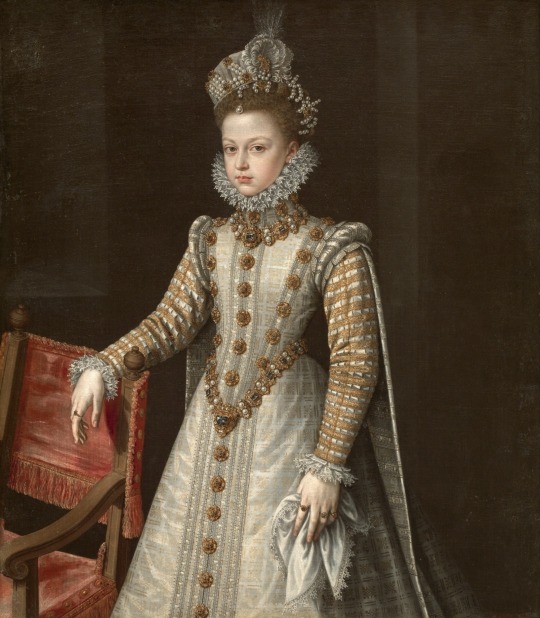
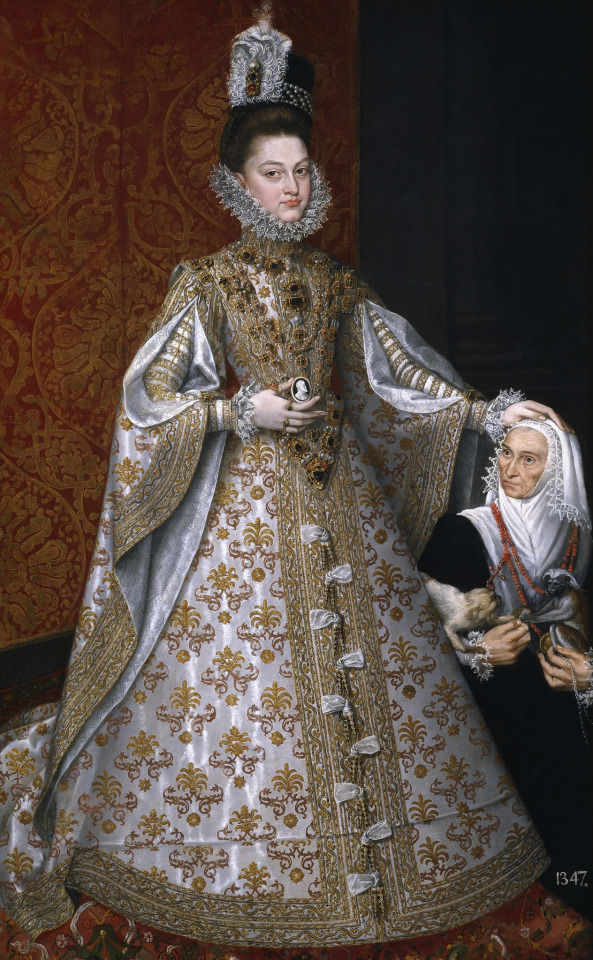
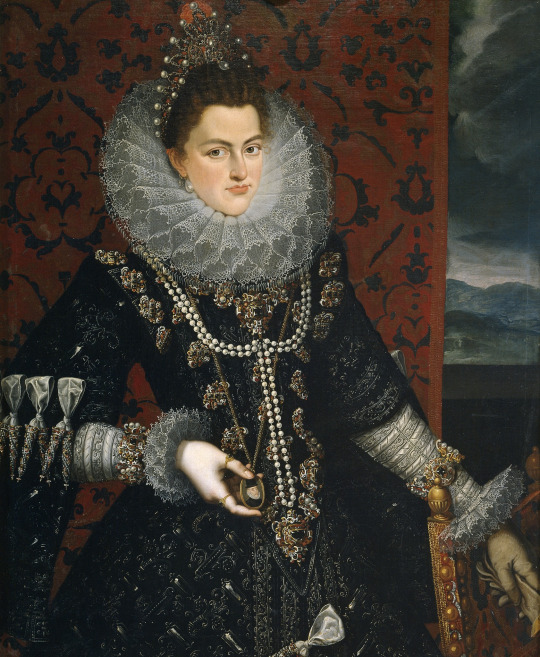

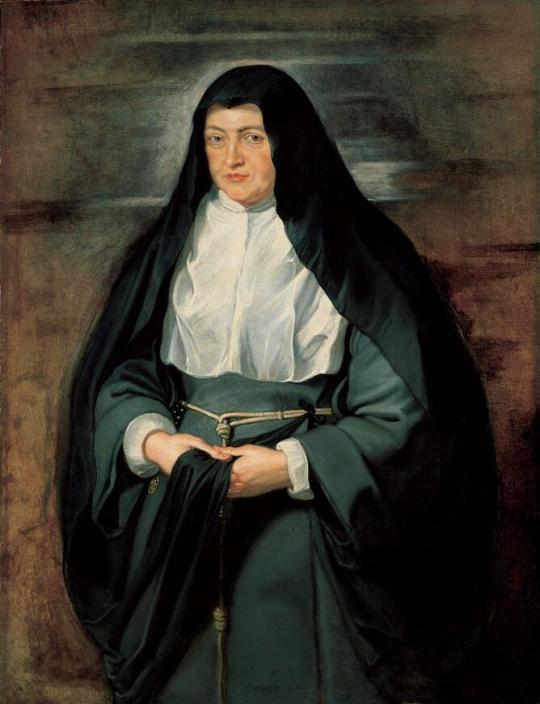

The Infanta Isabella Clara Eugenia (Spanish, 1566-1633): Sovereign of the Netherlands, Duchess of Lothier, Brabant, Limburg, Luxemburg, and Guelders, Margravine of Namur, Countess Palatine of Burgundy, Countess of Flanders, Artois and Hainaut. [source]
1. Attributed to Alonso Sánchez Coello (1531-1588) and Workshop, Isabella Clara Eugenia and Catharina, Daughters of Philip II, King of Spain, c. 1569-70, oil on canvas; The Royal Collection Trust, Green Drawing Room, Buckingham Palace.
2. Alonso Sánchez Coello (Spanish,1531-1588), The Infantas Isabel Clara Eugenia and Catalina Micaela, circa 1575, oil on canvas, Museo del Prado, Madrid.
3. Alonso Sánchez Coello (Spanish, 1531-1588), Infanta Isabella Clara Eugenia, 1577, oil on canvas, Museo del Prado, Madrid.
4. Alonso Sánchez Coello, The Infanta Isabella Clara Eugenia and Magdalena Ruiz, 1586, oil on canvas, Museo Nacional del Prado, Madrid.
5. Juan Pantoja de la Cruz (Spanish, 1553-1608), The Infanta Isabel Clara Eugenia, 1598-99, oil on canvas, Museo del Prado, Madrid.
6. Frans Pourbus the Younger (Flemish, 1569-1622), The Infanta Isabella Clara Eugenia, Archduchess of Austria, c. 1598-1600, oil on canvas.
7. Peter Paul Rubens and Workshop (Flemish, 1577-1640), Portrait of Archduchess Isabella Clara Eugenia, Spanish Regent of the Low Countries, as a Nun, 1625, oil on canvas.
8. Anthony van Dyck (Flemish, 1599-1641), The Infanta Isabella Clara Eugenia, c. 1630, oil on canvas, Walker Art Gallery.
Infanta Isabella Clara Eugenia (Spanish, Segovia, 1566 - 1633, Brussels) was the daughter of Philip II of Spain and his third wife, Elizabeth of Valois, who died after a miscarriage when the Infanta was only two. Her sister Catalina Micaela was one year younger.
She became the sovereign of the Spanish Netherlands in the Low Countries and the north of modern France with her husband, Archduke Albert VII of Austria. She was one of the most powerful women in Europe at the time. The couple had no children. She joined the Sisters of St. Clare order after her co-regent's death.
#infanta isabel clara eugenia#spanish royalty#powerful women#alonso sánchez coello#juan pantoja de la cruz#frans pourbus the younger#peter paul rubens#anthony van dyck#16th century#17th century#european history
39 notes
·
View notes
Text


The Official Launch Party of Carlton Cannes, a Regent Hotel
(first photo by Nick Hayman )
25 notes
·
View notes
Photo

Abraham de Vries - Regents of the city orphanage in Amsterdam - 1633
In the background, the "binnenvader" is leading a young girl to meet the regents. She is clothed in the characteristic orphan dress. From left to right, the regents are: Gerrit Pietersz. Schaep, Gerbrand Claesz. Pancras, Nicolaes van Campen, Frans de Neve, Cornelis Jacobsz. Wayer, Nicolaes Hasselaer.
Pictured in the group portrait are the regents who were responsible for the major renovation of the Burgerweeshuis orphanage in Amsterdam during the years 1630-1634. The arrangement of the composition is very original: de Vries split the regents in two groups: one group on the left-hand side is composed of standing figures and the other on the right-hand side consists of sitting figures. In the background in the middle of the composition a member of staff of the orphanage leads a small orphan girl into the room and thereby links up the two groups. Abraham de Vries may have been the first artist to introduce a child as an "attribute" in a regents group portrait.[6] The portrait of the regents is still ‘’in situ’’ on the wall for which it was designed in the regent's room of the orphanage.
oil on canvas, height: 257 cm (101.1 in); width: 401 cm (13.1 ft)
Amsterdam Museum, The Netherlands
Abraham de Vries (ca.1590–1649 or 1650) was a Dutch painter who was one of the leading portraitists of his age. As he led a peripatetic lifestyle and worked in France, Antwerp and the Dutch Republic his stylistic qualities are difficult to pin down.
32 notes
·
View notes
Text
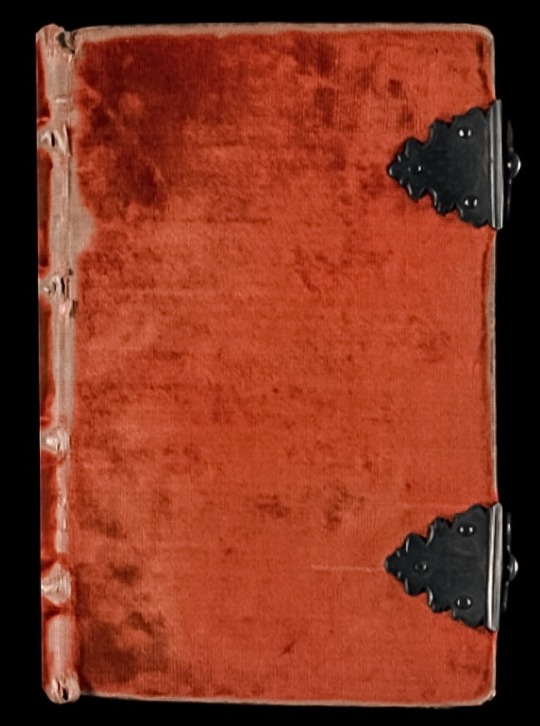
THE SFORZA HOURS (1490-1520) is one of the finest surviving Renaissance manuscripts. It is a Book of Hours — a volume designed for private use, containing the prayers and offices to be said at eight times of the day allotted by the church for prayers. The pages are small, designed to be carried by the owner.
The lavish decorations were painted in two stages: the first around 1490 for Bona Sforza, widow of Galeazzo Sforza, Duke of Milan, and the second for her nephew's widow, Margaret of Austria, Regent of the Netherlands, who inherited the manuscript in 1504. Giovan Pietro Birago, Bona Sforza's miniaturist, had completed and delivered part of the book when a substantial part of the remainder was stolen, never to be returned. Thirty years later, Margaret of Austria commissioned Gerard Horenbout to paint 16 additional miniatures to fill the gaps.
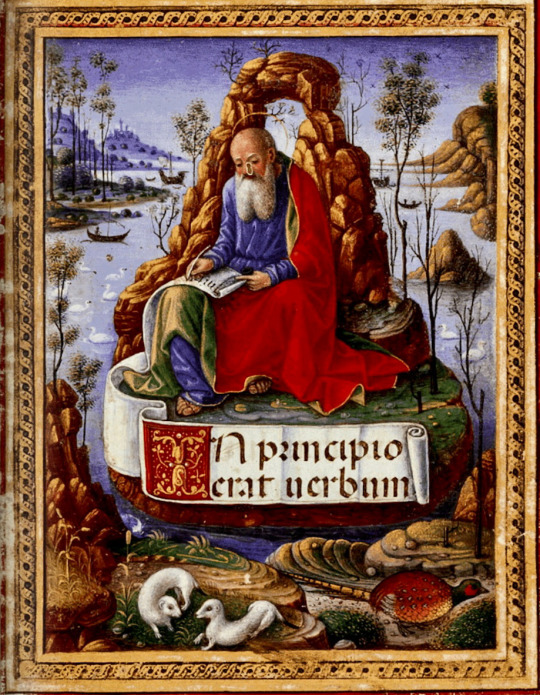
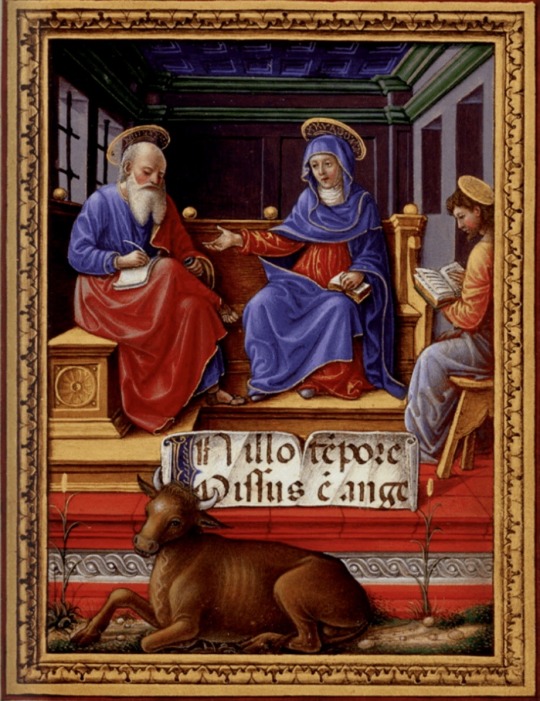
.
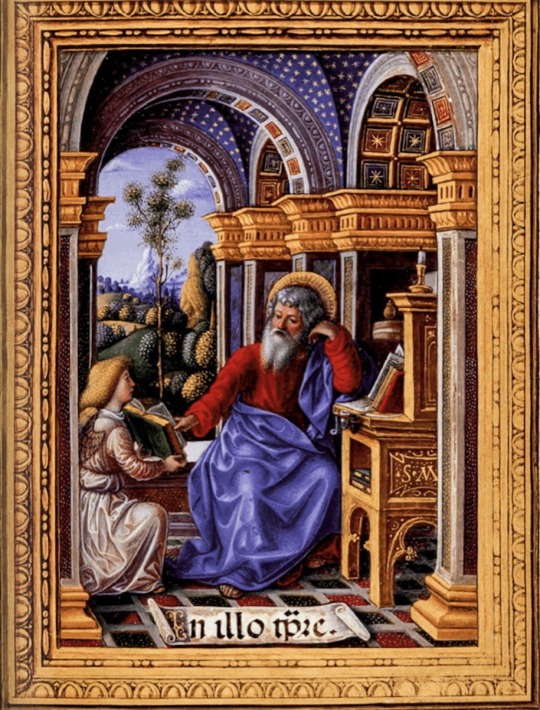
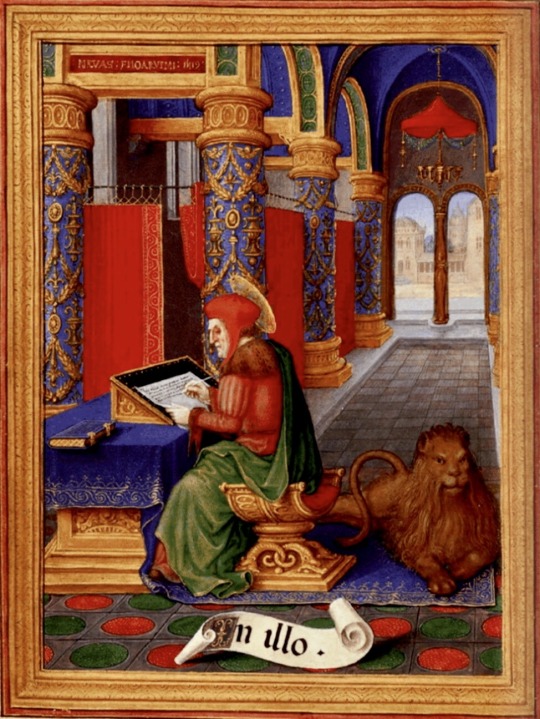
.
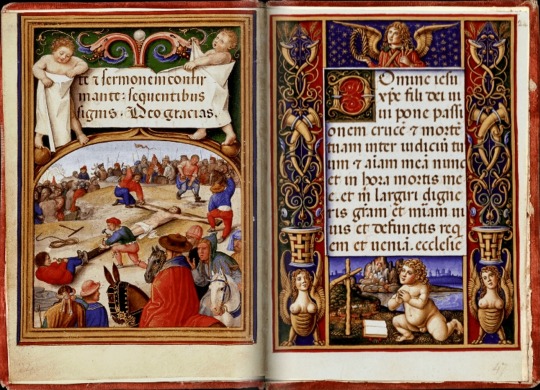
.
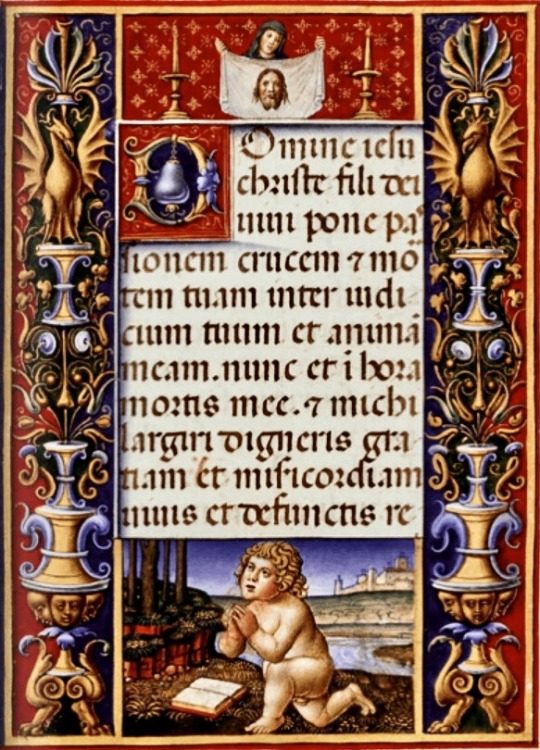
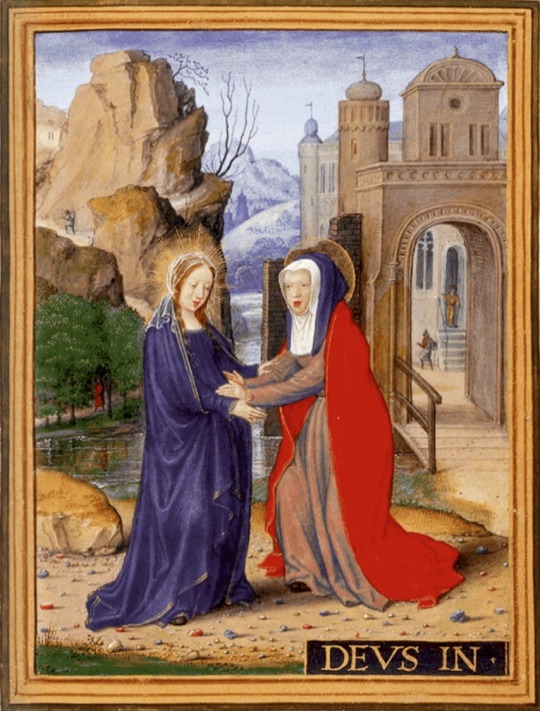
.
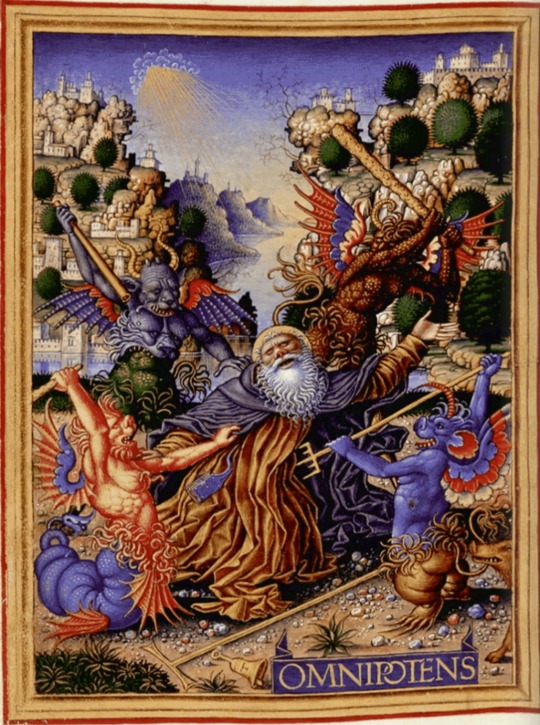

source
#beautiful books#book blog#books books books#book cover#books#illustrated book#book of hours#illuminated manuscript#old books#renaissance#book binding
48 notes
·
View notes
Note
What is some good Netherlandish music that I can listen to on Spotify?
all of a sudden i am ambassador to non dutch ppl interested in the netherlands! my impact!
this entirely depends dear reader, on what you hope to gain from this. i wouldn’t be able tell you whats good for learning dutch, but I can tell you some songs I enjoy and that’s enough. I’m assuming you mean songs in Dutch, and I will not be including songs I suspect of being Flemish due to your wording.
Bitterzoet- Eefje de Visser
De Diepte- S10
Zondagskind- S10
Goud- Froukje
Ik wil dansen- Froukje
Groter dan ik- Froukje
Dans mij naar huis- S10
Sterrenstof- De jeugd van tegenwoordig
Ja Ja Nee Nee- Goldband
Noodgeval- Goldband
Superlatieven- MEROL
Bitterzoet- BLØF
Later als ik groter ben- BLØF
Sexy als ik dans- Nielson
Bliksem- Nielson
Beauty en de brains- Nielson
Het regent zonnestralen- Acda en de munnik
Brabant- Guus Meeuwis (this one makes me a proud resident of brabant btw. i am australian.)
Hemel en Aarde- Edsilia Rombley
Alles is liefde- BLØF
#I would make a playlist but im not comfortable sharing my Spotify so publicly#but yeah hopefully there’s something for everyone here#if you want songs that are kinda more… joke-y come back i just didn’t wanna throw links rechts and kerst met de fam onto you#and if you want dutch songs in english… well… chef’special#anyways i could go on but i am stopping#thanks for asking!#dutch music#also anyone is welcome to add in the tags
14 notes
·
View notes
Text
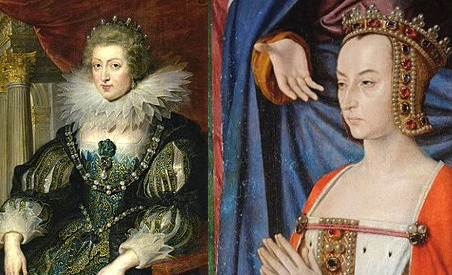
Anne d'Autriche:
Was a spanish habsburg born in Valadolid and, as such, princess of the Netherlands. Cause why not. She did the regency for her son Louis XIV until he became of age.
Anne:
While she wasn't officially the regent, her husband was, for her brother, so clearly she was in the influence sphere, and also she was her brother's legal tutor. She was the most powerful woman in Europe during that time, considered extremely intelligent and extremely dangerous to cross. Shaped european politics to this day.
Dates indicated are dates of regency.
18 notes
·
View notes
Text
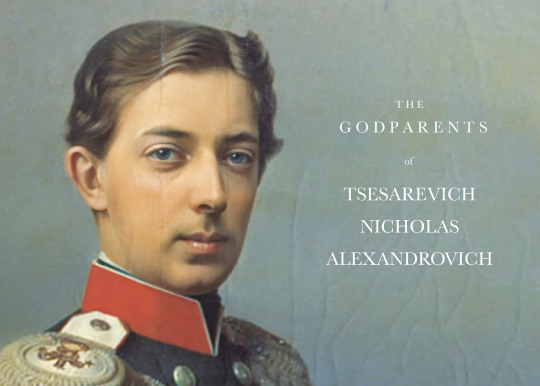
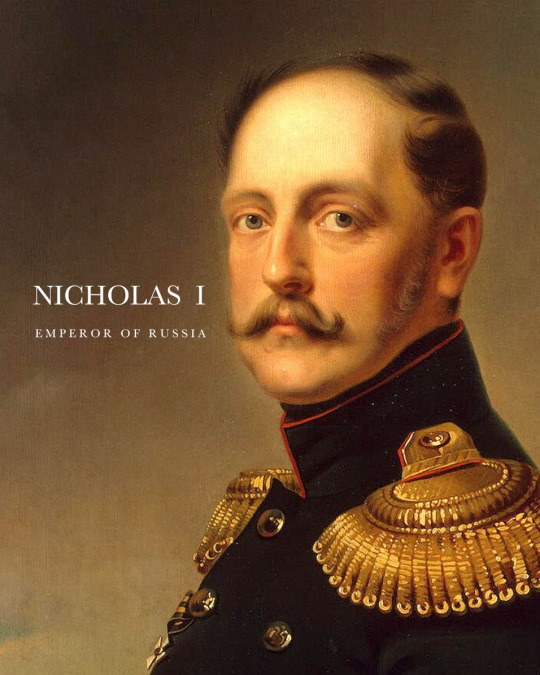
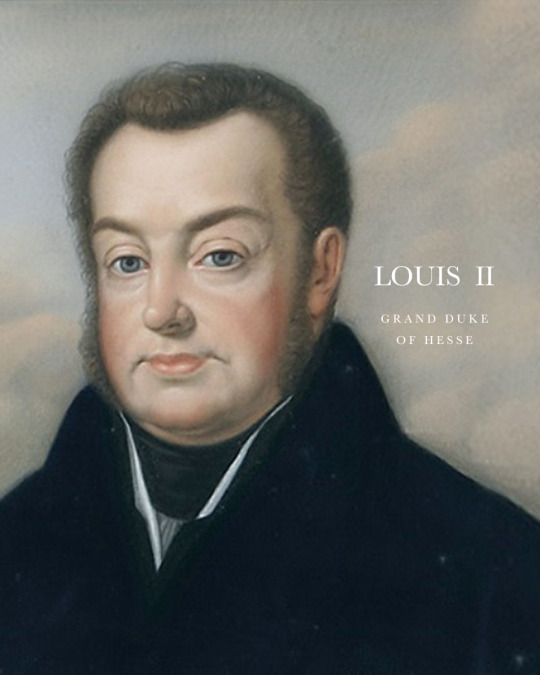

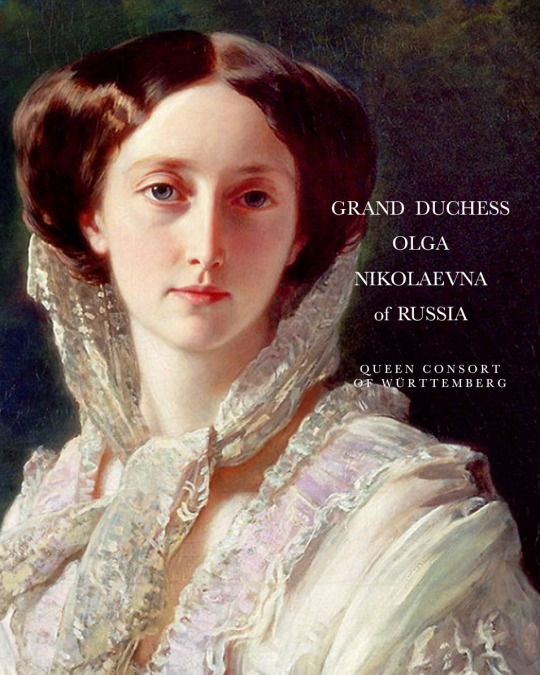
GODPARENTS OF TSESAREVICH NICHOLAS ALEXANDROVICH
Tsesarevich Nicholas Alexandrovich was born as Grand Duke of Russia during the reign of his formidable grandfather Emperor Nicholas I on 20th September 1843. He was the eldest son and second child born to Emperor Alexander II (then Tsesarevich) and his wife Empress Maria Alexandrovna. He was christened in the Grand Palace Church, Tsarskoe Selo, by the Confessor of His Imperial Majesty. He had four known godparents as listed:
NICHOLAS I, EMPEROR OF RUSSIA - his paternal grandfather and namesake was one of his godparents present at his christening. Mainly remembered in history as a reactionary whose controversial reign was marked by geographical expansion, centralisation of administrative policies and repression of dissent. He died in 1855, when the younger Nicholas was only 11 years-old, and thus making him the heir apparent (Tsesarevich).
LOUIS II, GRAND DUKE OF HESSE AND BY RHINE - his maternal grandfather was another of his godparents, but was absent at the christening. The hessian grand duke, like his paternal grandfather, was also considered a reactionary leader, he was in conflict with parliament almost his entire reign. The German revolution in 1848-49 proved his inability to govern. On March 5, 1848 he named his son Louis III as co-regent, and a year later he died.
GRAND DUCHESS ANNA PAVLOVNA OF RUSSIA, QUEEN CONSORT OF THE NETHERLANDS - his great-aunt was the third listed as godparent of the young grand duke, but was also absent at the christening. Queen Anna, the favourite sister of Emperor Nicholas I of Russia and the consort of King William II of the Netherlands, was a Russian patriot who upheld a strict royal etiquette in the Netherlands, where she never felt at home, and identified more as an Imperial Grand Duchess than a Dutch queen. She had no political influence, but was active within charity.
GRAND DUCHESS OLGA NIKOLAEVNA OF RUSSIA, QUEEN CONSORT OF WÜRTTEMBERG - his aunt was one of his godparents present at the christening. She was the younger sister of his father. Attractive, cultured and intelligent, she was considered to be one of the most eligible princesses in Europe. Just three years after her nephew was born, in 1846, she married Crown Prince Karl of Württemberg. Nicholas died just two months before seeing his aunt Queen consort of Württemberg.
Source
9 notes
·
View notes